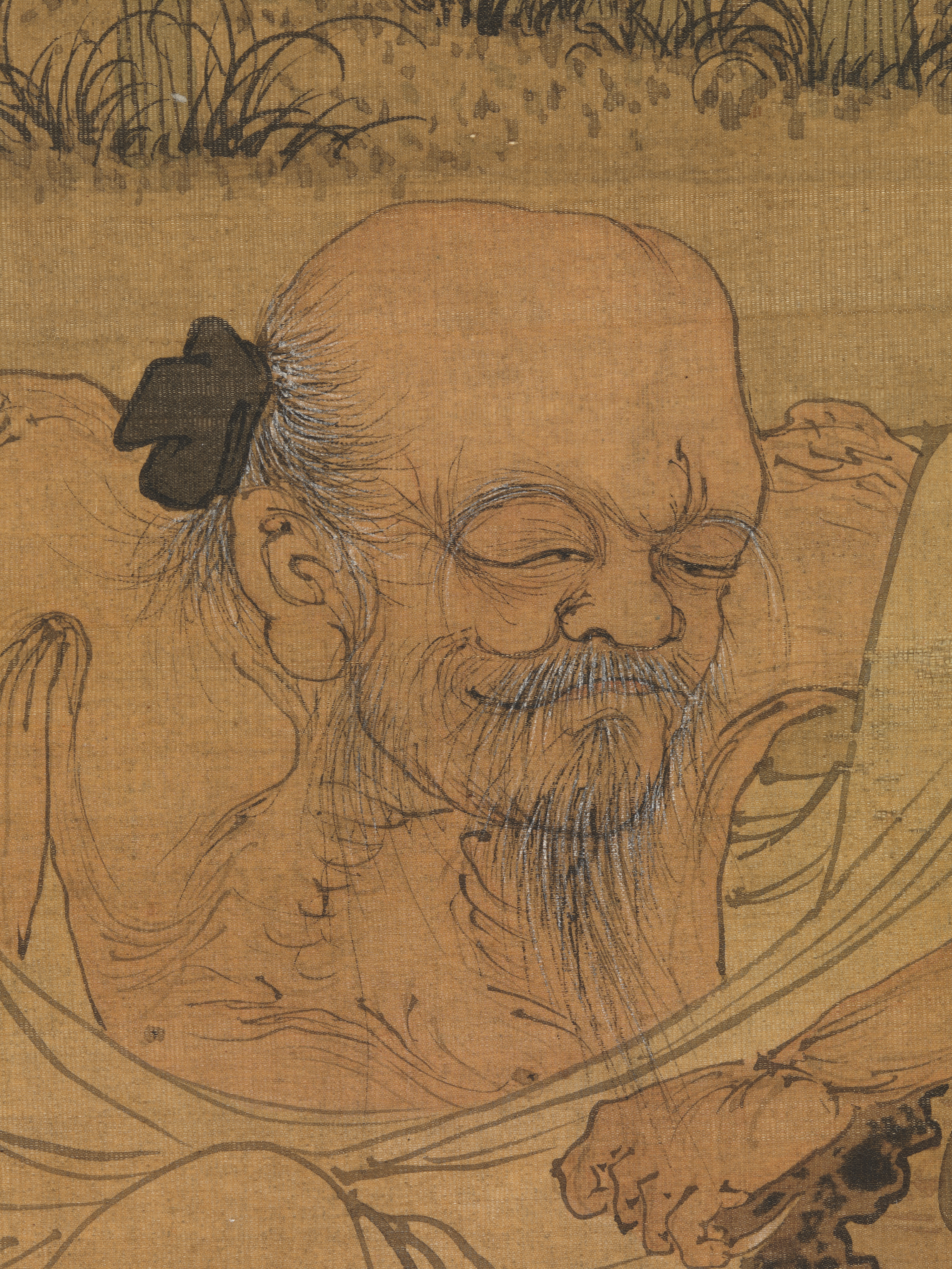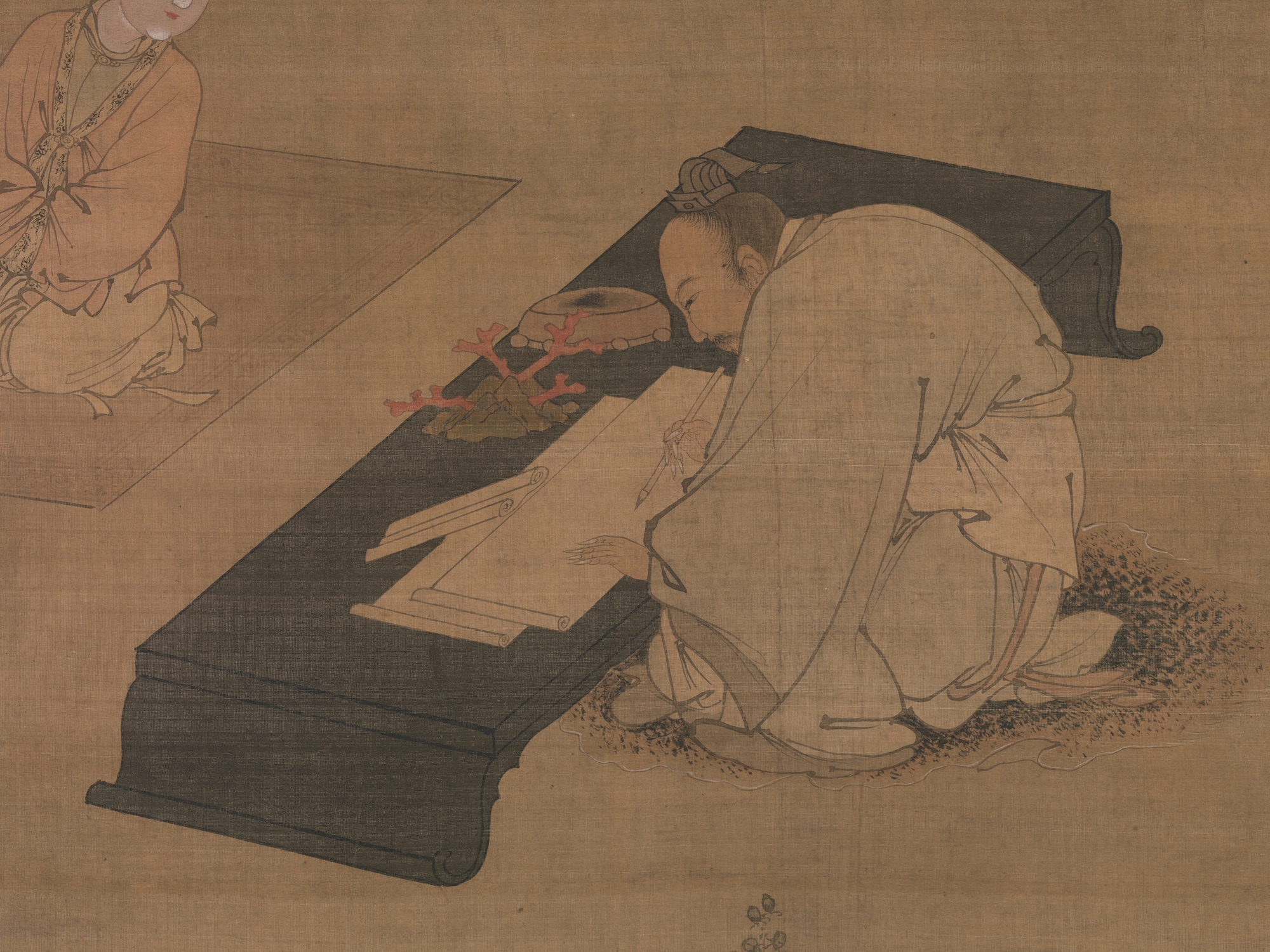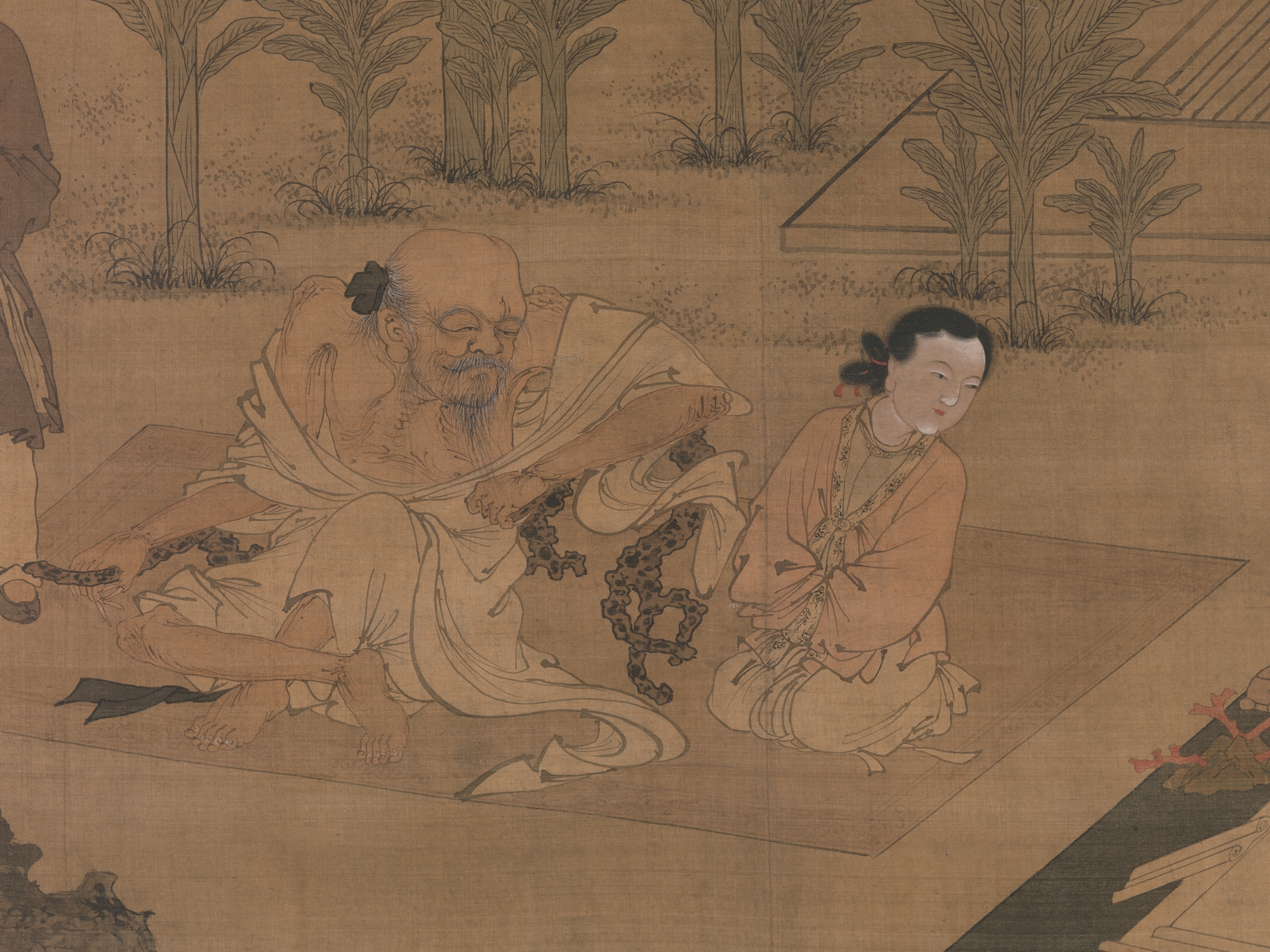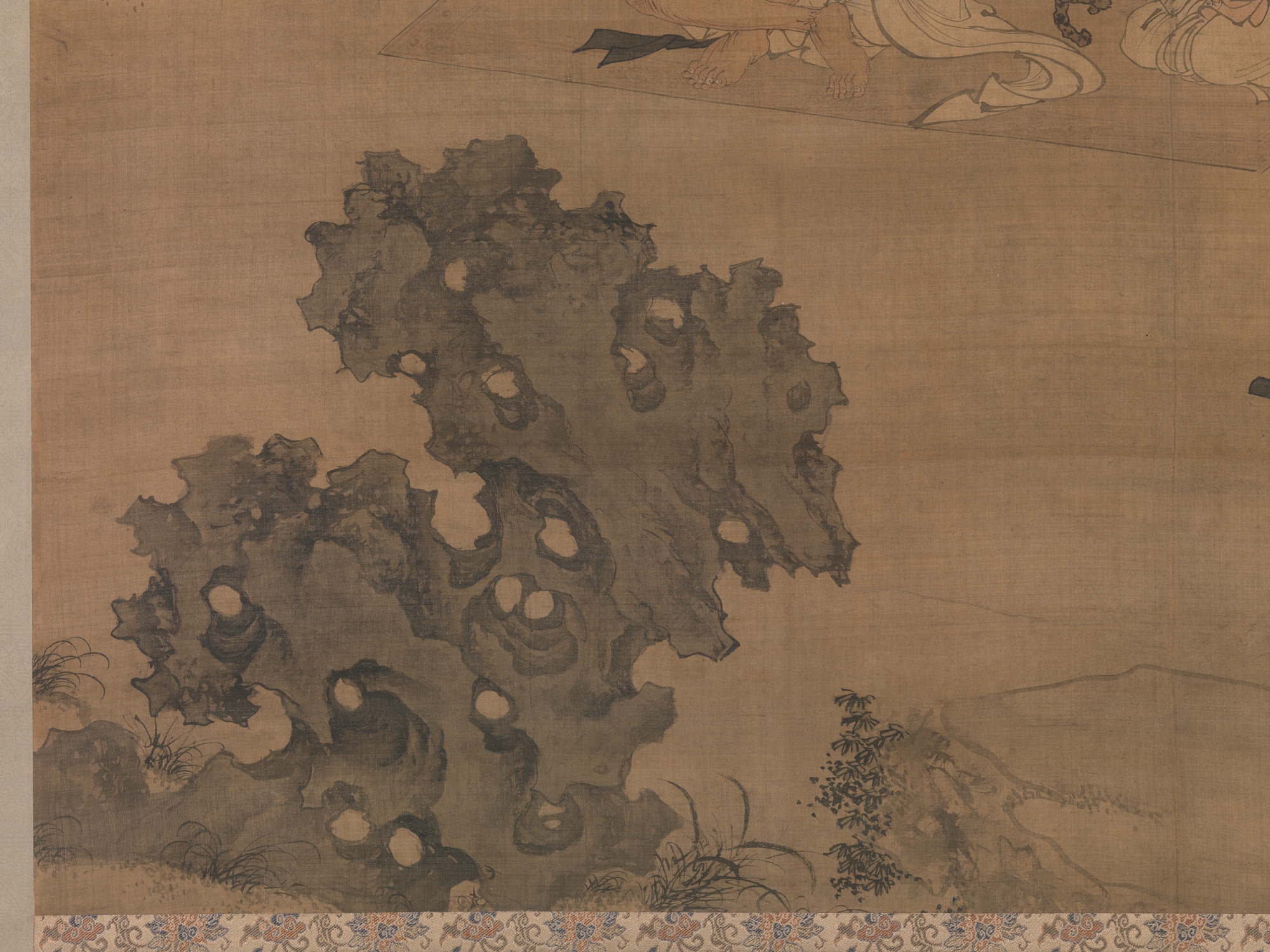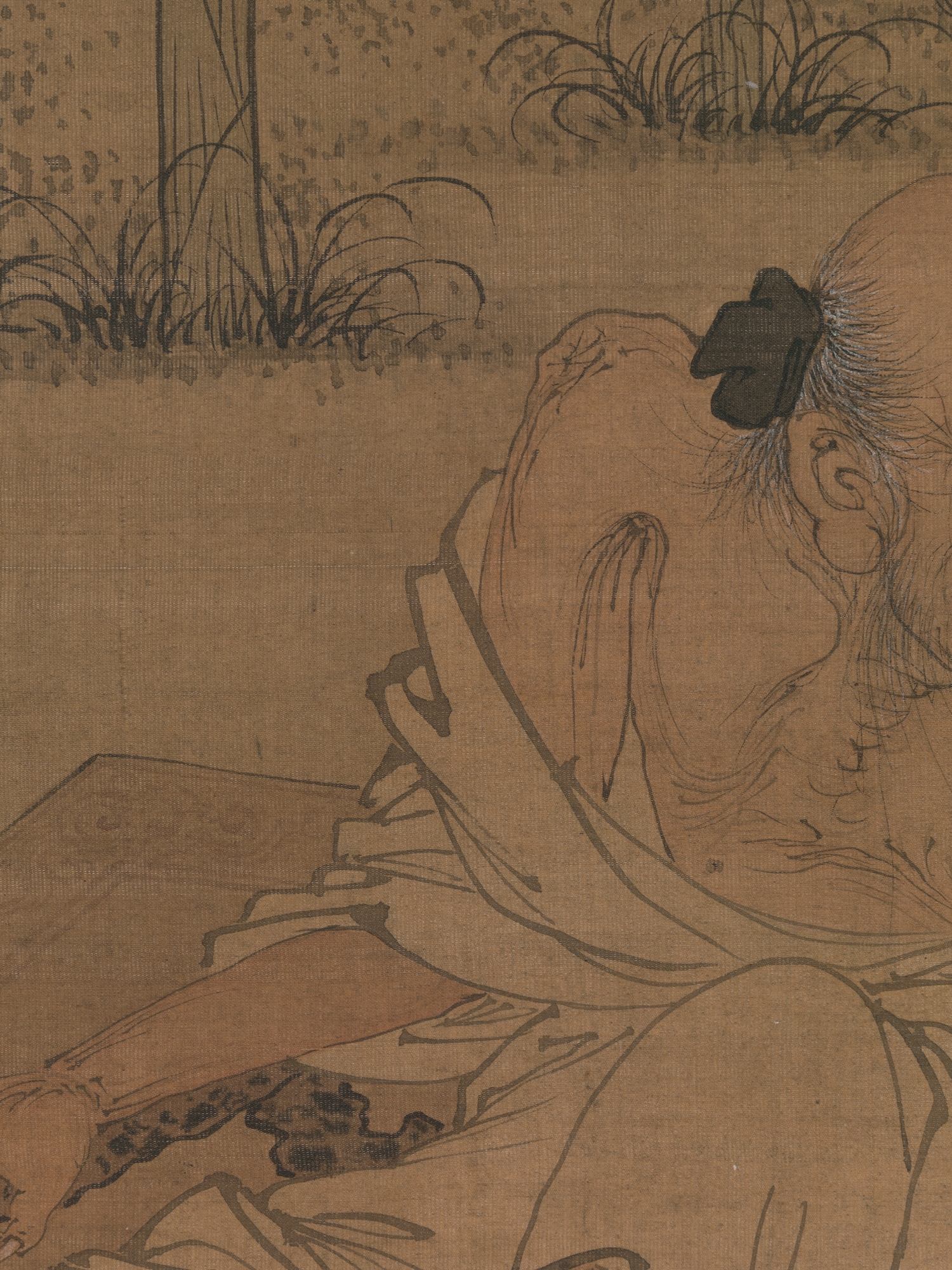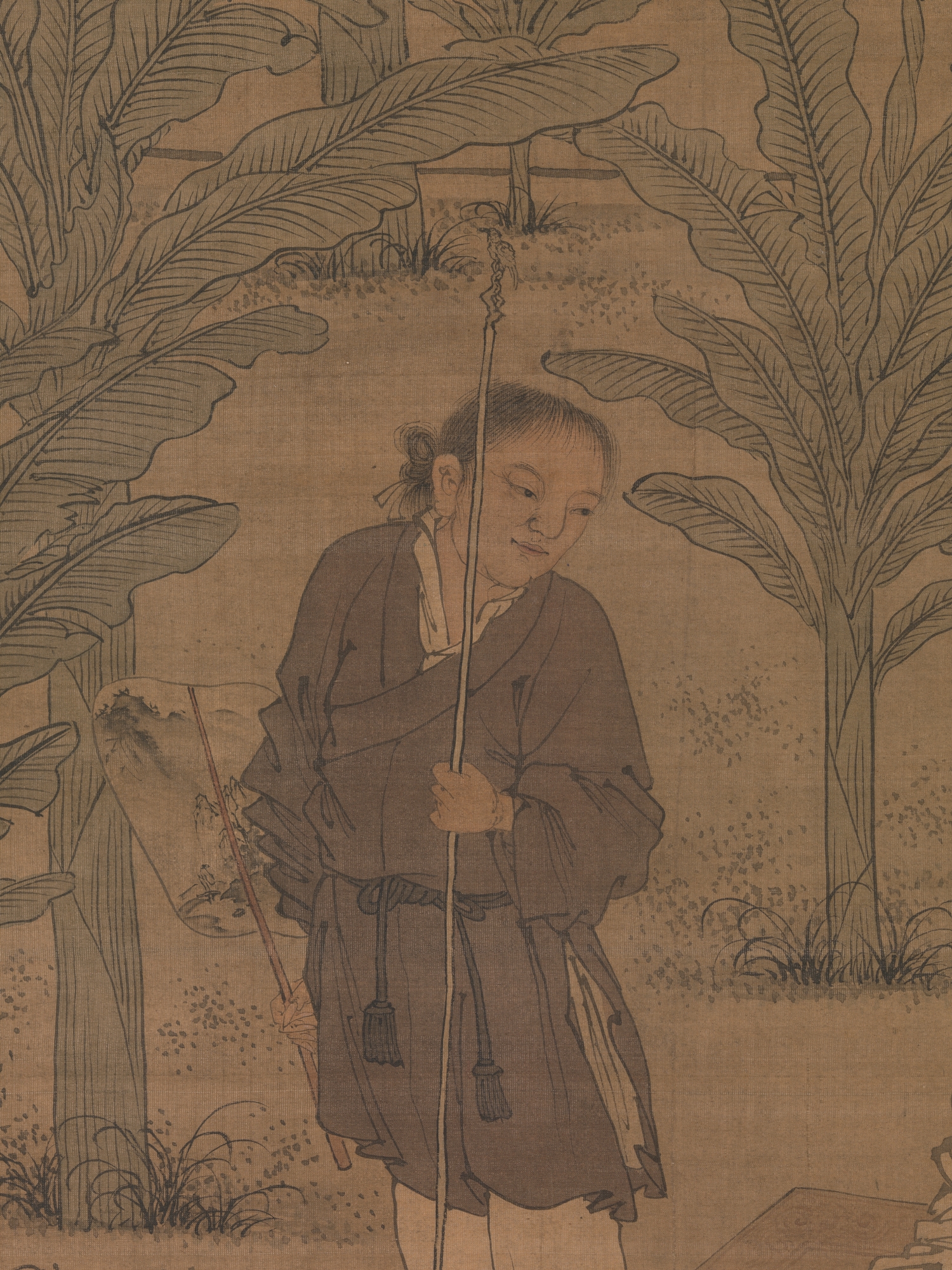The Scholar Fu Sheng Transmitting the Book of Documents
Du Jin Chinese
In his greatest act of infamy, the first emperor of Qin (Qin Shihuangdi) ruthlessly burned books and buried scholars alive to eliminate opposition. When the Han dynasty was established in 206 B.C., a program to reconstruct texts began. Fu Sheng retrieved a copy of the Book of Documents that he had hidden and spent the remainder of his days lecturing on it. Here Fu Sheng is shown discoursing on the text with the official Shao Zuo, who was sent by the emperor. Fu Sheng’s daughter, Fu Nu, seated beside him, was a scholar in her own right and aided by translating their local dialect into one familiar to the scribe.
Du Jin was trained as a scholar but became a professional painter after failing the jinshi civil-service examination. He cultivated a circle of patrons and literati friends—including the artists Tang Yin and Shen Zhou—in Beijing, where he moved, as well as in Nanjing and Suzhou. Through these contacts Du Jin played a significant role in the development of a local professional painting style in Suzhou that was basically a refined version of the high academic style of the imperial court. Although this painting no longer bears a signature, it is a classic example of Du Jin’s polished academic manner.
#7500. The Scholar Fu Sheng Transmitting the Book of Documents
Due to rights restrictions, this image cannot be enlarged, viewed at full screen, or downloaded.
This artwork is meant to be viewed from right to left. Scroll left to view more.


